Are you looking for some simple and effective ways to get rid of whiteflies on your tomato plants – all without using harsh chemicals that can leave you a bit worried about consuming your harvest?
Whiteflies are tiny winged flying insects that can bring about huge issues to tomato plants. Both the adults and the nymphs suck on the sap that is within a plant’s leaves, causing irreparable damage.
Before long, the leaves start to turn yellow, curl up, and eventually die. Not only does this feeding steal vital nutrients that the tomatoes need in order to produce blooms and fruit, but the plants are left weakened and susceptible to all sorts of different diseases.
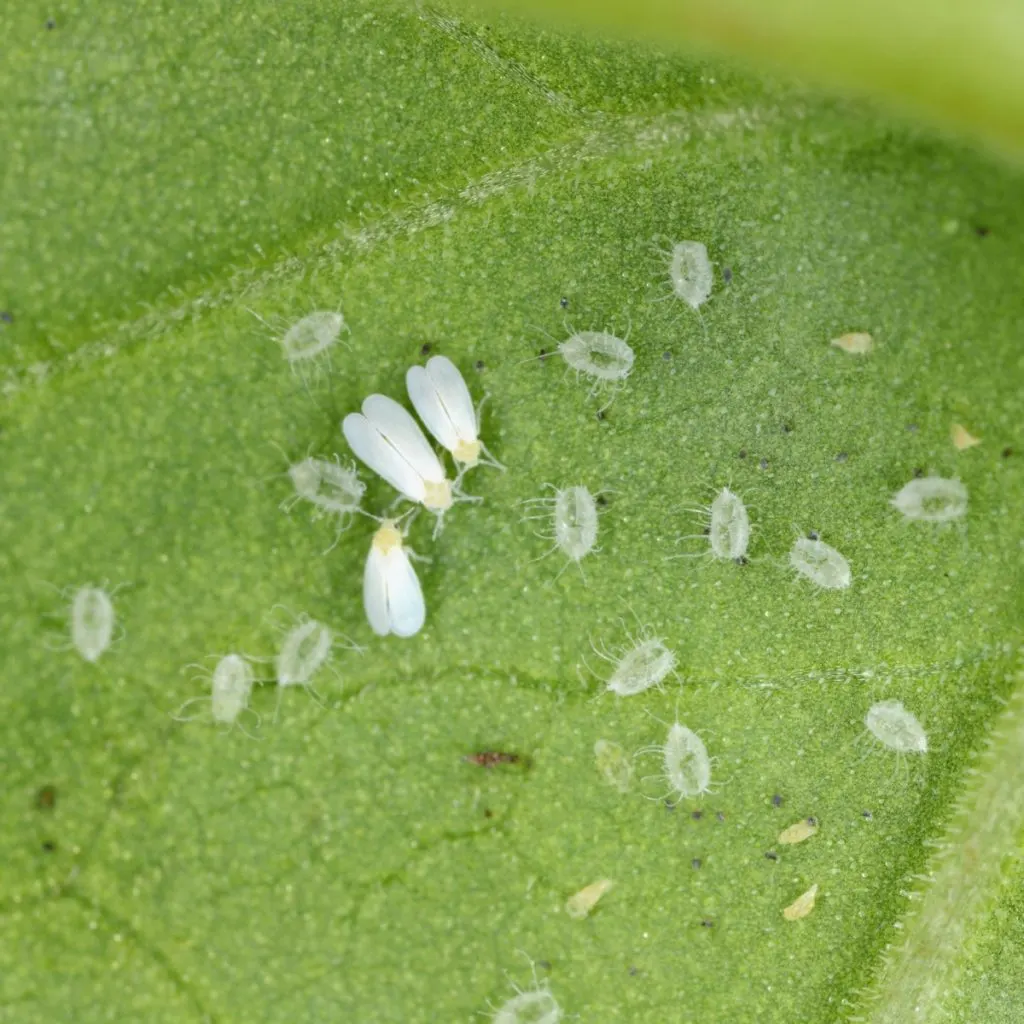
As the whiteflies feast on the sap, they secrete what’s referred to as “honeydew.” This sticky, cream-colored substance not only attracts ants but also can lead to a fungal disease called black sooty mold.
In addition, whiteflies can also transmit a whole host of different viruses that can be deadly for tomato plants. So without measures being taken to control their population, your tomato crop – and your harvest – will suffer greatly from these tiny feeding insects.
What Are Whiteflies?
Have you ever walked into your garden and had a cloud of tiny white insects fly out from your plants? If so, you’ve likely experienced a whitefly infestation.
Even though whiteflies have the word “fly” in their name, they are not actually flies. In fact, they actually are more related to aphids and mealybugs due to their soft bodies. However, the insects do have wings and are capable of flying – which means they can easily go from plant to plant.
Whiteflies are triangular-shaped and typically live on the underside of leaves and foliage. Measuring only 1/12 of an inch, they are extremely small but since they live in big groups, they are often easy to spot.
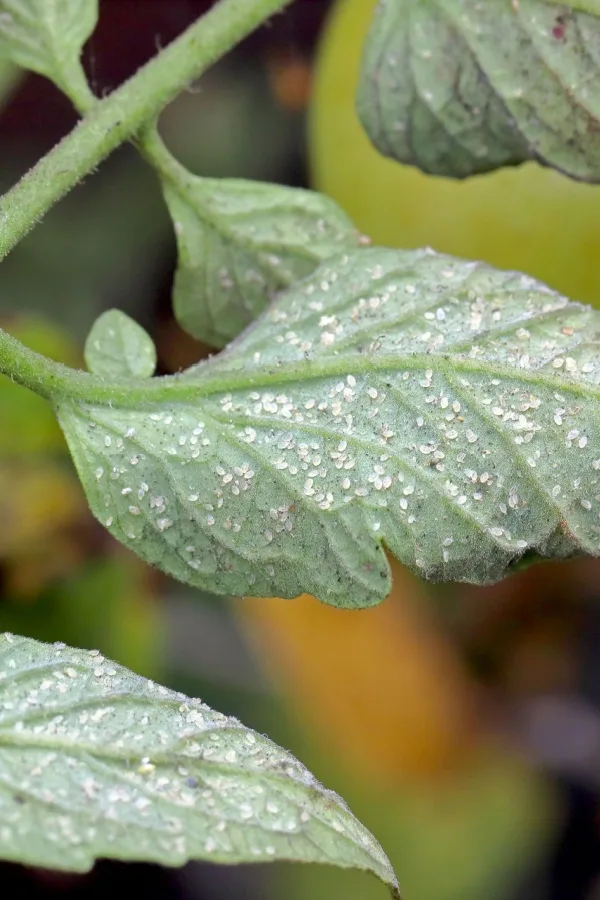
There are hundreds of different whitefly species that affect more than 250 different host plants. Some of the most common plants affected are tomatoes, green beans, potatoes, cucumbers, squash, and citrus.
Spotting Whitefly Damage
The first main sign of whiteflies is pale, wilting leaves. Since the whiteflies live and feed on the bottom of leaves, an infestation might not be noticeable at first without close inspection.
If the flying insects have been there long enough, you might notice the presence of honeydew. If you see ants crawling amongst your plants, they are likely feasting on the honeydew secreted by either whiteflies or possibly aphids, another garden pest that lives on the bottom of leaves.
An obvious sign is the appearance of tiny white insects flying up when you bump up against or disturb a plant. The insects will take flight when leaves are disturbed, letting you instantly know you have a major problem on hand.
4 Ways To Get Rid Of Whiteflies On Tomato Plants
As with all garden issues like pests and diseases, your best line of defense is to catch an issue early in the process. Walk your garden daily, checking both the top and bottom of the foliage for damage or pests.
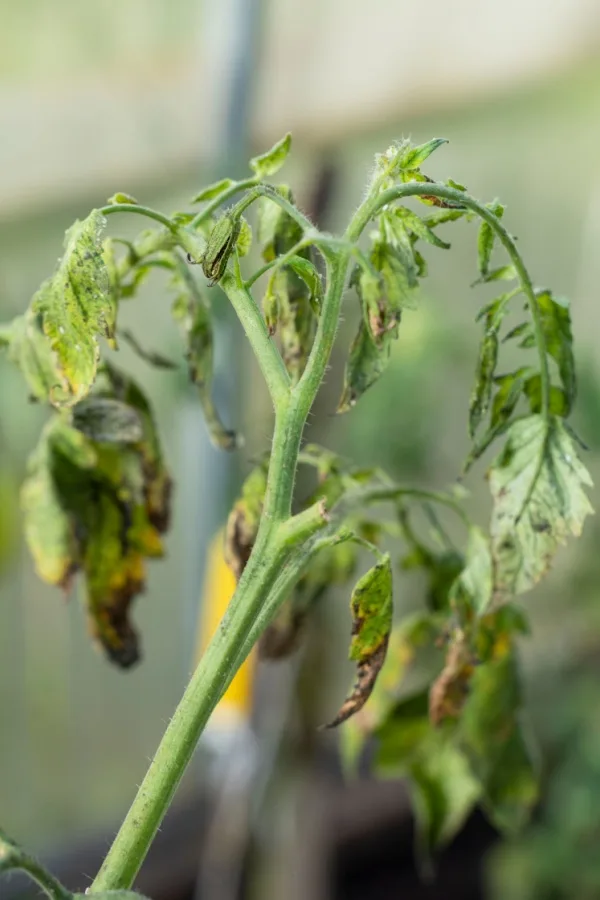
If you do spot whiteflies on your tomato plants (or any other plant in your garden for that matter), all is not lost! Try one of these simple tricks to get rid of them – all without harsh chemicals!
Neem Oil
Neem oil is a natural product that has been around for hundreds of years. It is an organic way to control pests and fungal diseases on all sorts of plants including trees, shrubs, flowers, and garden vegetables.
The oil is made by pressing on the seeds of neem trees that are commonly found in Africa and India. When used properly, it can control all stages of a whitefly’s lifecycle – from egg to adult.
The best part is that when used correctly, neem oil is safe for beneficial creatures like bees, butterflies, birds, and even earthworms. This is because they don’t consume plant materials like whiteflies do. It’s also safe for you, your kids, and your pets, too.
You can find neem oil available in ready-to-use formulas or concentrated forms. When purchasing concentrated oil, make sure it is 100% neem oil without any fillers or other ingredients.
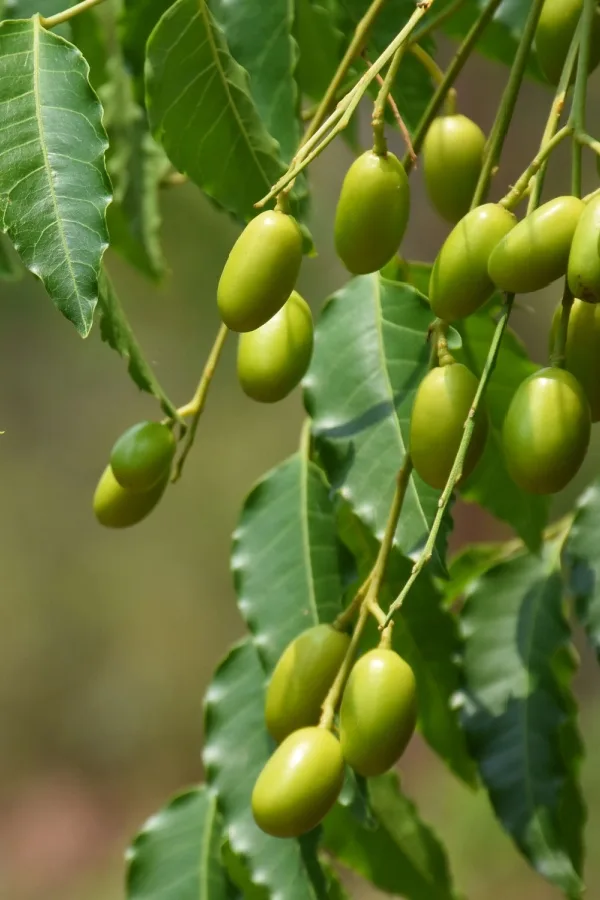
To use, mix about an ounce of neem oil for every gallon of warm water. Add a few drops of dish soap to help the oil disperse and stick to the tomato plant’s foliage. Mix well and add to a handheld or backpack sprayer. Product Link: Chapin 1 -Gallon Lawn and Garden Multi-purpose Sprayer
Spray the solution on both the top and bottom of the tomato plant’s leaves to help get rid of whiteflies. Reapply every one to two weeks or after heavy rains. Always wash the sprayed produce before consuming.
Soapy Water
One of the easiest and cheapest ways to get rid of whiteflies on your tomato plants is to use plain old soapy water. This mixture works fast to kill the soft-bodied insects while leaving your tomato plants unharmed.
Simply mix four tablespoons of biodegradable liquid dish soap with one gallon of warm water. Add to a handheld or backpack sprayer and get to work!
Spray the soapy water on all sides of the leaves of affected plants, especially the bottoms since that is where whiteflies like to hang out. As soon as the mixture comes into contact with the whiteflies, they die.
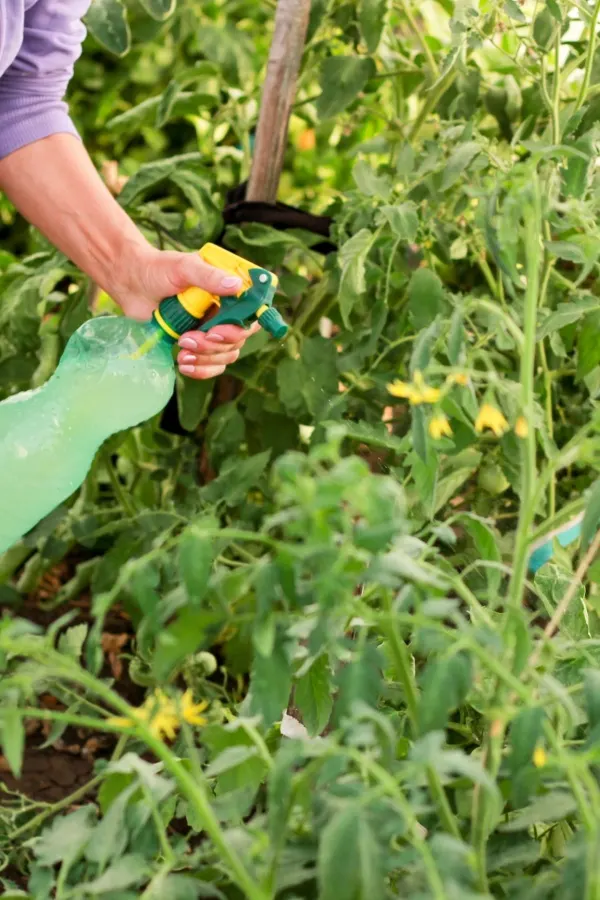
Soapy water works best when you use it daily for at least a week or longer. This helps to ensure you kill the entire infestation, including any newly hatched nymphs.
Worm Castings
Not only are worm castings an amazing slow-release fertilizer but you can also use them to get rid of whiteflies from your tomato plants!
Worm castings work by increasing the enzyme levels of chitinase in tomato plants. When this specific enzyme shows up in more concentrated forms, whiteflies avoid feeding on the plants.
Add about half a cup of worm castings into the planting hole when you plant your tomato transplants. If you already have tomatoes in the ground, just sprinkle a cup or so of worm castings around the base of each plant.
Every time it rains or you water your plants, the enzyme levels will be absorbed by the plant’s roots. This helps your to defend your plants all while providing plants with a boost of nutrients at the same time!
Beneficial Plants
You can even use companion planting to your advantage to help get rid of whiteflies around your tomato plants. See, How To Use Worm Castings To Fertilize Tomato Plants
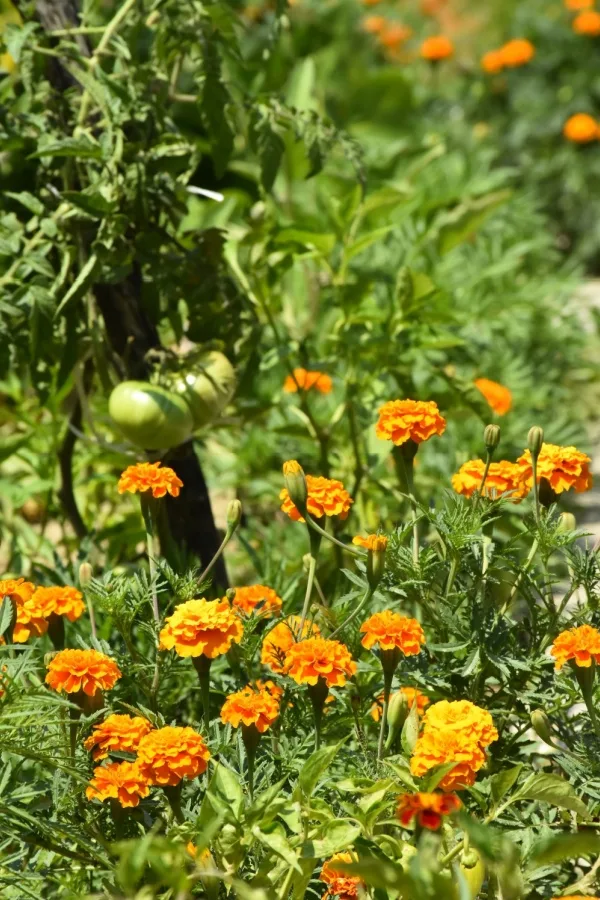
Plants with strong scents like chives, basil, thyme, and marigolds all work to help repel whiteflies – and plenty of other garden pests! Simply plant a few of these amongst your tomato plants and let nature get rid of the whiteflies for you.
At the same time, you can grow plants that can help to attract beneficial insects like ladybugs and parasitic wasps. These insects feast on whiteflies, aphids, and other garden pests.
Plants like zinnias, marigolds, and nasturtiums draw in these beneficial insects. At the same time, these flowers will also work to bring in pollinators to your garden space. It’s a win-win!
Here’s to getting rid of whiteflies on your tomato plants naturally so you can enjoy a wonderful harvest without resorting to using harsh chemicals and sprays!
I Grow Tomatoes
Follow Our Facebook Page For Even More Great Tomato Growing Tips! I Grow Tomatoes Facebook Page
I Grow Tomatoes is a website created for those who love all things about tomatoes – from planting and growing – to cooking and canning! We publish two articles every week, 52 weeks a year. Sign up today to follow via email! This article may contain affiliate links.
